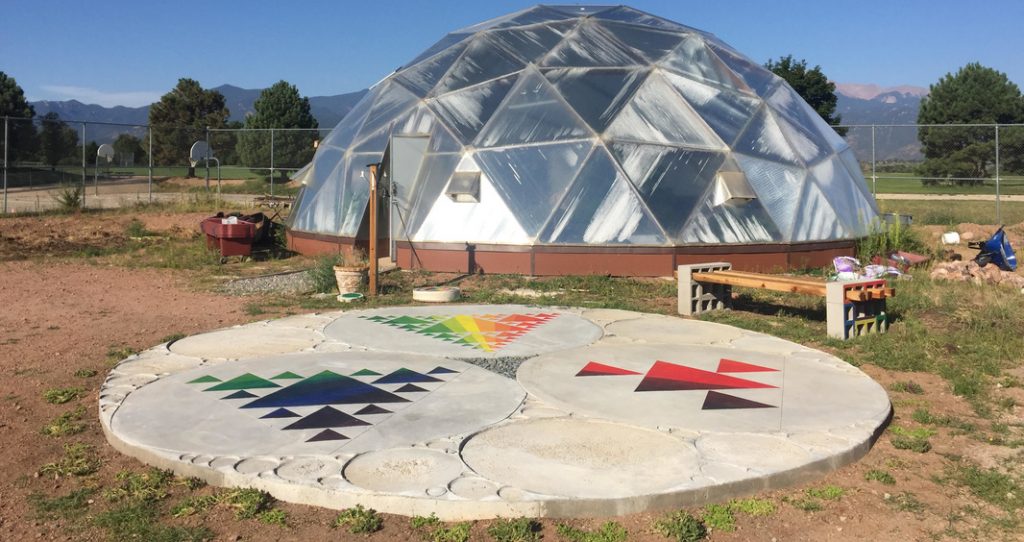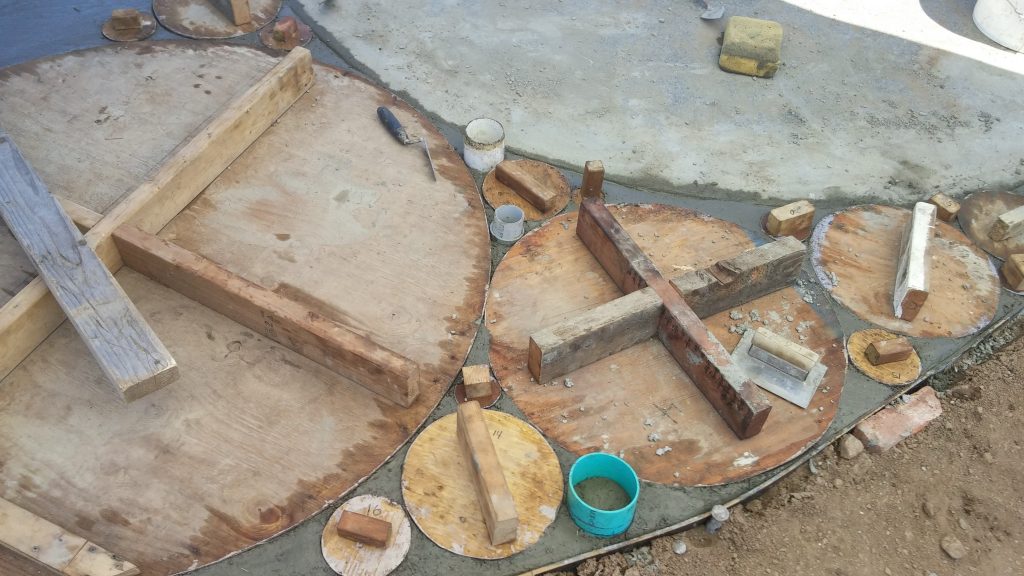Concrete Fractal

The Concrete Fractal Project was a collaboration with Master Gardener Scott Wilson for the The Galileo Garden Project and Joel Newmiller from Endepium Technology. The Galileo Garden Project was an initiative by Scoot Wilson to build a sustainable farm to school program where middle school students could grow food that they were able to eat in their own cafeteria. His program was such a success, that Scott was able to support fundraising efforts by selling excess produce from the garden. These efforts ultimately lead to a collaboration with Concrete Couch, where Joel Newmiller had been teaching at the time, and Scott and Joel developed the concept for a 20-ft diameter Concrete Fractal Pad.
After several iterations, Joel’s design for the Concrete Fractal Pad lead him to a pattern that would juxtapose several recursive patterns – an inset curved linear Apollonian gasket and hand-cut, superficial, triad of Sierpiński triangles. Setting the Apollonian gasket into the concrete created the potential for additional fractal patterns to be added inside each circle later using mosaic, concrete, and mortar techniques.
The exterior, circular portions of the Concrete Fractal Pad were constructed using a common curved linear Apollonian gasket design. In two dimensions, Descartes Circle Theorem (a.k.a. the “kissing circle theorem)” can be used to calculate the possible values for the radius of a fourth circle tangent to three given, mutually tangent circles. After recursively calculating the diameter of each circle needed to fill in the gasket at each point, concrete forms were constructed to match the calculated diameters of the circles (see the pdf attached to the bottom of this section for a map of the circles). Forms were hand fabricated using either recycled plywood or from scavenged piping of the appropriate diameter, and the fractal was poured in three sections so that the forms could be reused.

After the pour, the concrete was allowed to set for two weeks. Sierpiński triangles were then laid out using string, and cut by hand into the largest, interior circles using an angle grinder fitted with a dry-cut diamond wheel. In the picture at the top of this post, from the rightmost triangle and moving counterclockwise, the three Sierpiński triangles show 2, 3, and 4 iterations of the algorithm used to to remove triangles from the an equilateral triangle. The iterations were chosen to help illustrate the process of generating a fractal pattern recursively at sequential steps in a fractal generating algorithm.
The Concrete Fractal Pad was finished by hand staining collection of high quality acid stains that were mixed and blended together to portray a color wheel. The lines of the color wheel converge toward center of the Concrete Fractal Pad, evoking the sensation of standing on the plane of a grid when standing at the base of one of the triangles.